Last Updated on August 20, 2020
The coronavirus pandemic has unpredictably changed consumer behaviour.
As a Webmaster or an SEO, it is your responsibility to keep these behaviour changes into account when you are conducting keyword research.
Any SEO professional worthy of their salt understands how to use Google search console and any other keyword research tool to create content that increases traffic, improves ranking and enhances visibility in search results. But now it is time to think out of the box.
You have to understand that people’s behaviour has been greatly impacted due to the long-term lockdown, and this is why you need to learn about the new tools that will help you create better SEO strategies.
The world changed on March 11, 2020, when the World Health Organisation declared coronavirus outbreak is a pandemic. If you do not know what new tools or strategies you need to implement after the D-Day, here are our top suggestions.
1. Rising Retail Categories
In May 2020, Think with Google launched an interactive tool called Rising Retail Categories, that is designed to help us understand:
- Fast-rising retail categories in Google search results
- Locations of these rising categories
- Queries associated with these categories
Image
For example, here are the top categories in the U.S. year-on-year basis:
- sneeze guards
- sprinkler controls
- household disinfectants
- protective masks
- neck gaiters
If, we drill down to top trending categories on a monthly basis we get:
- Food Container Covers (+100%).
- Crayons (+100%).
- Medical Equipment (+90%).
- Pen & Pencil Cases (+70%).
- Baby & Toddler Outerwear (+60%).
Then, we tackle the top trending categories week over week basis:
- Blank ID Cards (+40%).
- Pie & Pastry Fillings (+30%).
- Play Mats & Gyms (+30%).
- Foosball Tables (+30%).
- Neck Gaiters (+30%).
- Chalkboards (+30%).
Now, if your client or company makes these products, this is the time for them to be in the spotlight and make some profits.
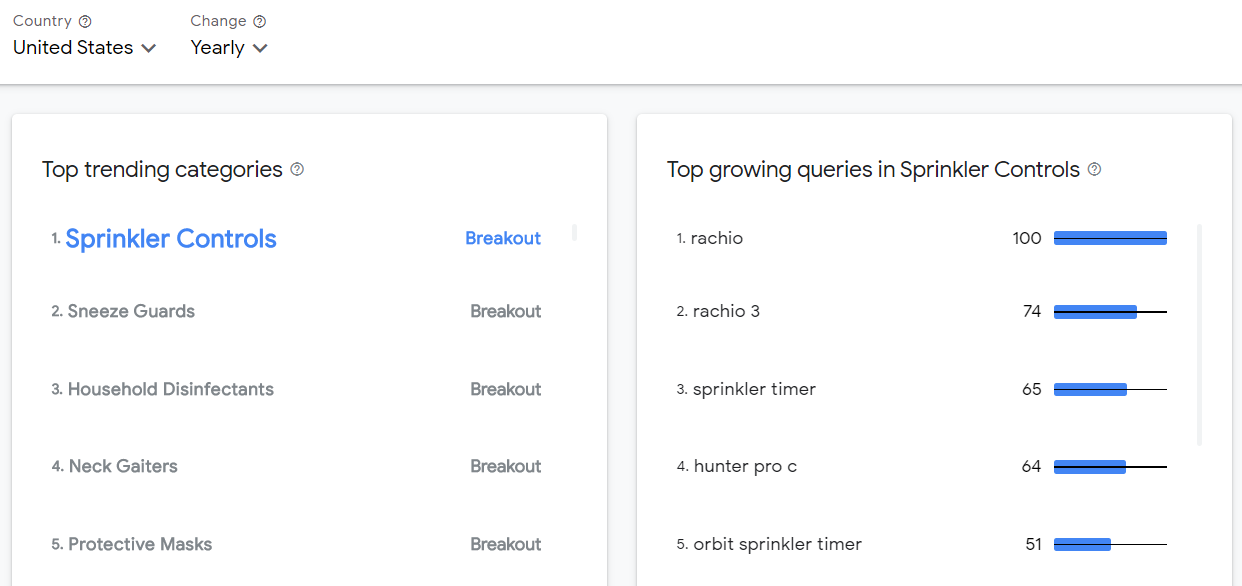
2. Increase in Coronavirus Search Trends
Google launched Coronavirus Search Trends in May 2020.
As can be assumed, there was an enormous surge in the search for topics related to coronavirus from late February to early May.
Since then there has been a decline in the interest for coronavirus related topics and news, yet this trend maintains its level above the sports and music categories.
This is something you need to think about.
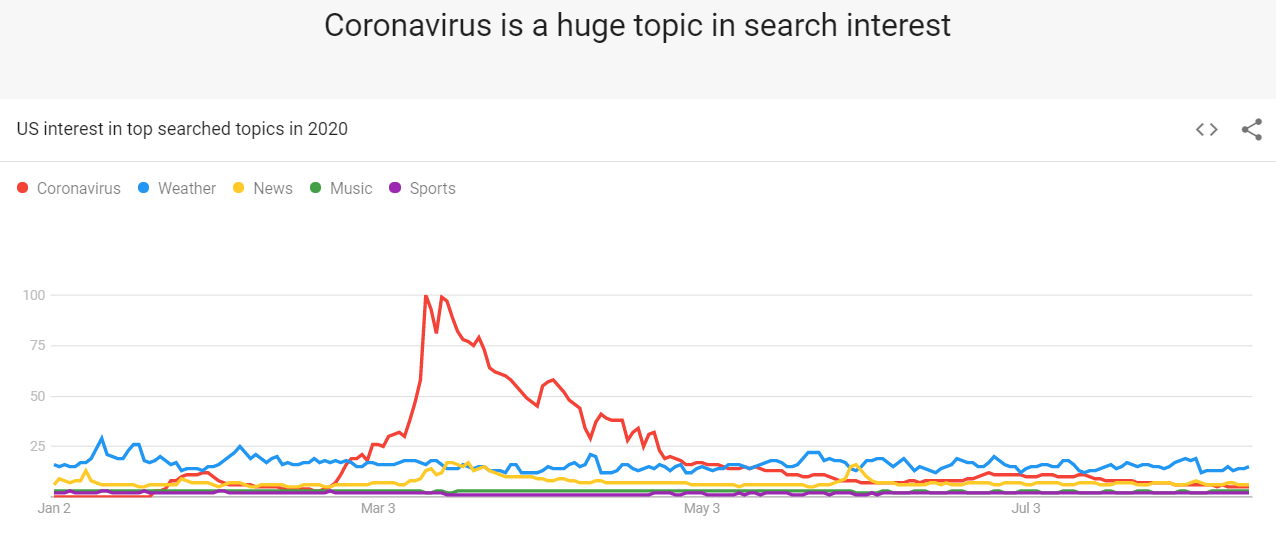
3. Shopping Insights
Google launched Shopping Insights in October 2015, but the tool has never been widely popular even when it can be used to see how your company or clients are doing against the competitors.
However, in post COVID-19 era, this tool is a lifesaver. During these extraordinarily uncertain times, there is no way to keep a tab on changing buying behaviour of customers. This one tool can help you stay up to date with the trends like what shoppers want in which categories are seeing an upward spike.
Wondering how Google provides these shopping insights?
According to Think with Google, 63% of shoppers go online to do product research before they actually make a purchase irrespective of whether they are buying online or offline. This behaviour helps the search giant to make sense of the searcher’s intent and provide these insights.
Shopping Insights (US) is powered by the data of the daily search for 55,000+ products, 45,000+ brands, and nearly 5,000 categories across the U.S.
This tool can help you gain a deep insight into the customer’s shopping intent and help you make more informed marketing and merchandising decisions across online and offline channels.
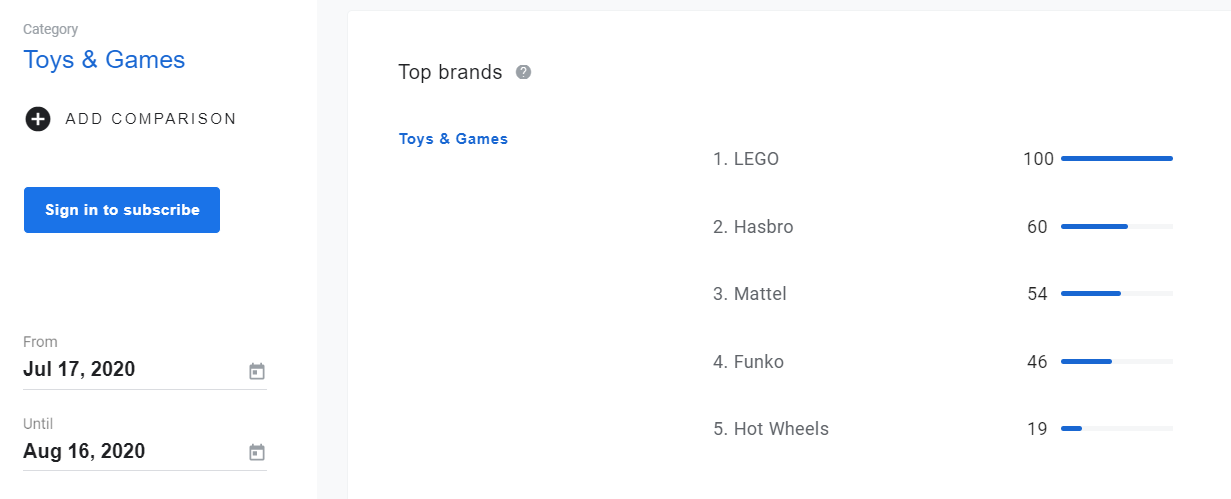
Here is an example of the top toy brands in the Toys & Games category from July 17 to August 16, 2020:
1. LEGO.
2. Hasbro.
3. Mattel.
4. Funko.
5. Hot Wheels.
Now, if you’re planning a holiday sale or a small business event, you know which brands to stock up to make profits and generate revenues.
4. The U.S. Economy & COVID-19
 Another tool that Google added to the Coronavirus Search Trends is focused on The U.S. Economy and COVID-19.
Another tool that Google added to the Coronavirus Search Trends is focused on The U.S. Economy and COVID-19.
In this section, you will find interesting information like:
How has the pandemic affected searches around the economy?
How do they compare to the searches in the past?
There is a lot of information available on this page, and you will find a surge in terms like unemployment benefits, food stamps, mortgage forbearance and food bank.
There is also a map of the country where you can see in which regions there has been an increase in interest in terms like bankruptcy, debt and “can’t pay rent.”
5. Google Surveys
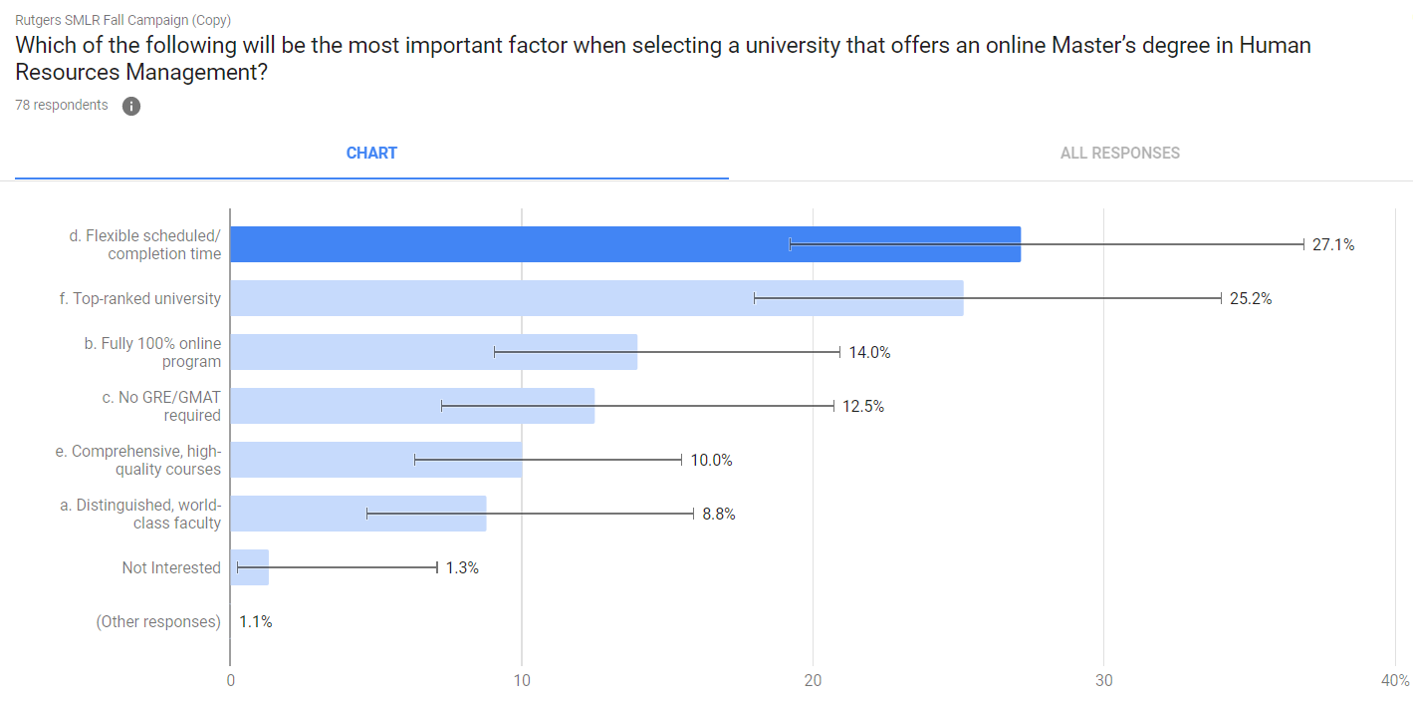 Google Consumer Surveys has been around since March 2012, however, in October 2016, the search giant renamed it as Google Surveys.
Google Consumer Surveys has been around since March 2012, however, in October 2016, the search giant renamed it as Google Surveys.
We have been using this tool for a long time to get a peek into the minds of our clients’ target audiences.
If you’re not aware of what this tool is, it is a market research tool that helps you get the data by making surveys based on the questions you write. The web users then answer your survey questions in order to access high-quality content on the Google Display Network.
The content publishers get paid because their visitors answer the surveys. Google then analyses and aggregates the responses and present them in a simple online interface. If you are thinking, why do we use Google Surveys when we already have Search Console and keyword tools, then you are missing a vital point. These tools tell you “what” people are searching, but they won’t tell you “why” they are searching it.
With the surveys, you get the chance to peek above the walls and understand consumer behaviour to uncover search intent, which is much more valuable.
You can set up screening questions to ensure that the respondents of a particular survey are the audiences are the ones your client is targeting instead of everyone answering the survey which is using the search.
Google Surveys allows you to get answers within days that might take weeks with any other traditional survey method.
And here’s the catch, it is the cheapest survey tool around.
Unfortunately, it is not free, but the prices start from $0.10 per completed survey, you will typically end up paying about $1.50 per completed survey. This is the price for surveys that have around ten questions that are targeted at respondents based on their location age and gender.
If you think about it with the keyword research tool, you can always find the keyword phrases to optimise the headline and content of the landing page. But, with Google Surveys, you can actually find out what is the intent of your audiences and ensure that the content addresses those queries.
This is extremely valuable.
You can generate organic search traffic at an unprecedented rate with this approach.
6. Market Finder
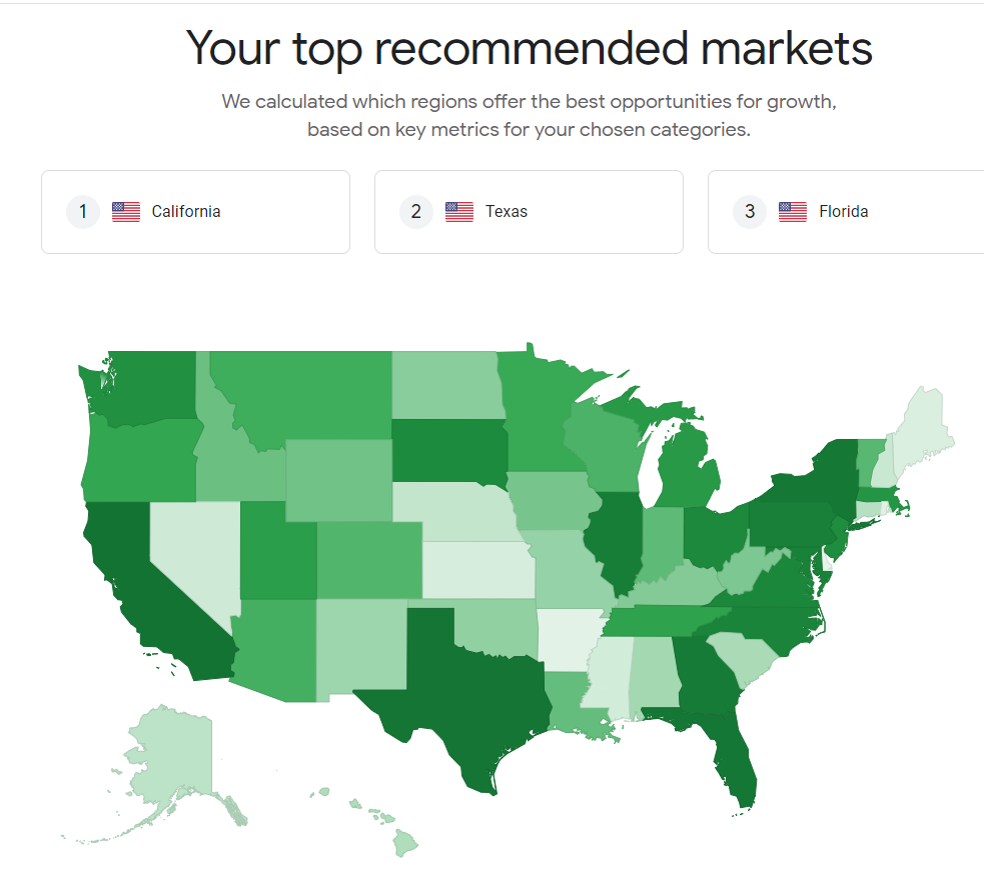 This is another tool for retailers that was launched by Google in November 2017, however, it is rarely mentioned.
This is another tool for retailers that was launched by Google in November 2017, however, it is rarely mentioned.
But, now, this tool has become a game-changer helping businesses navigate through the “new normal.”
For example, if your client is a college offering online degrees, then you can use the Market Finder tool to calculate the regions that offer the best growth opportunities based on your chosen key metrics.
All you have to do is enter the URL into the Market Finder and it will spit out the markets where the business has the most potential for growth. This tool can be very useful for capturing the significant shift in the geographical trends before and after the pandemic.
7. Google Trends
Google Trends is one of the most used marketing tools and probably the oldest one too.
Not usually used by the SEOs because it does not provide data on organic search volumes, but now the times are not usual.
With Google Trends, you can find insights within minutes of an event happening in the real world that can help SEOs to make strategic decisions in the present times.
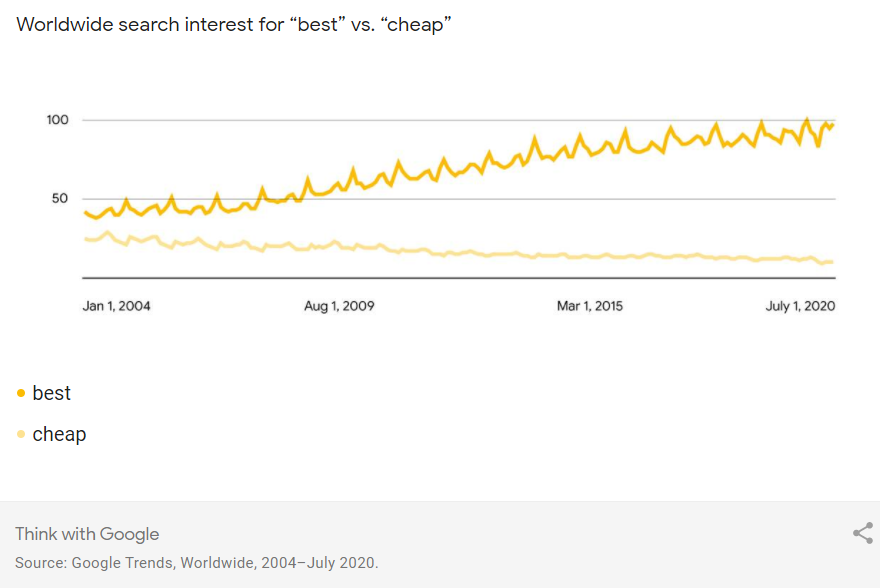
While using this tool, we came to an amazing realisation that “best” queries have actually increased rather than “cheap” queries in these uncertain times.
This is why you should create content based on the “best” instead of creating and optimising new content for “cheap” queries.
Why?
Because that is what customers are searching for.
Even though you might be tempted to go otherwise in the time of crisis, but Google Trends help you gauge the market for the actual trends rather than your gut feeling.
The Takeaway
SeoEaze recommends that in these uncertain times, instead of relying only on the old market research and keyword planning tools, you should explore some of the alternatives that we have mentioned here.
Maybe these tools might help your company or clients get back on their feet from the COVID-19 induced recession quicker than you anticipate.

